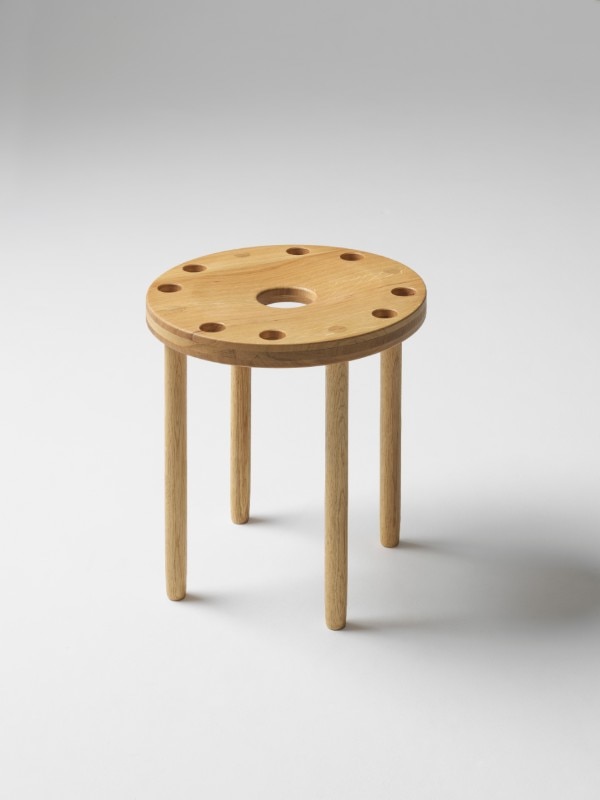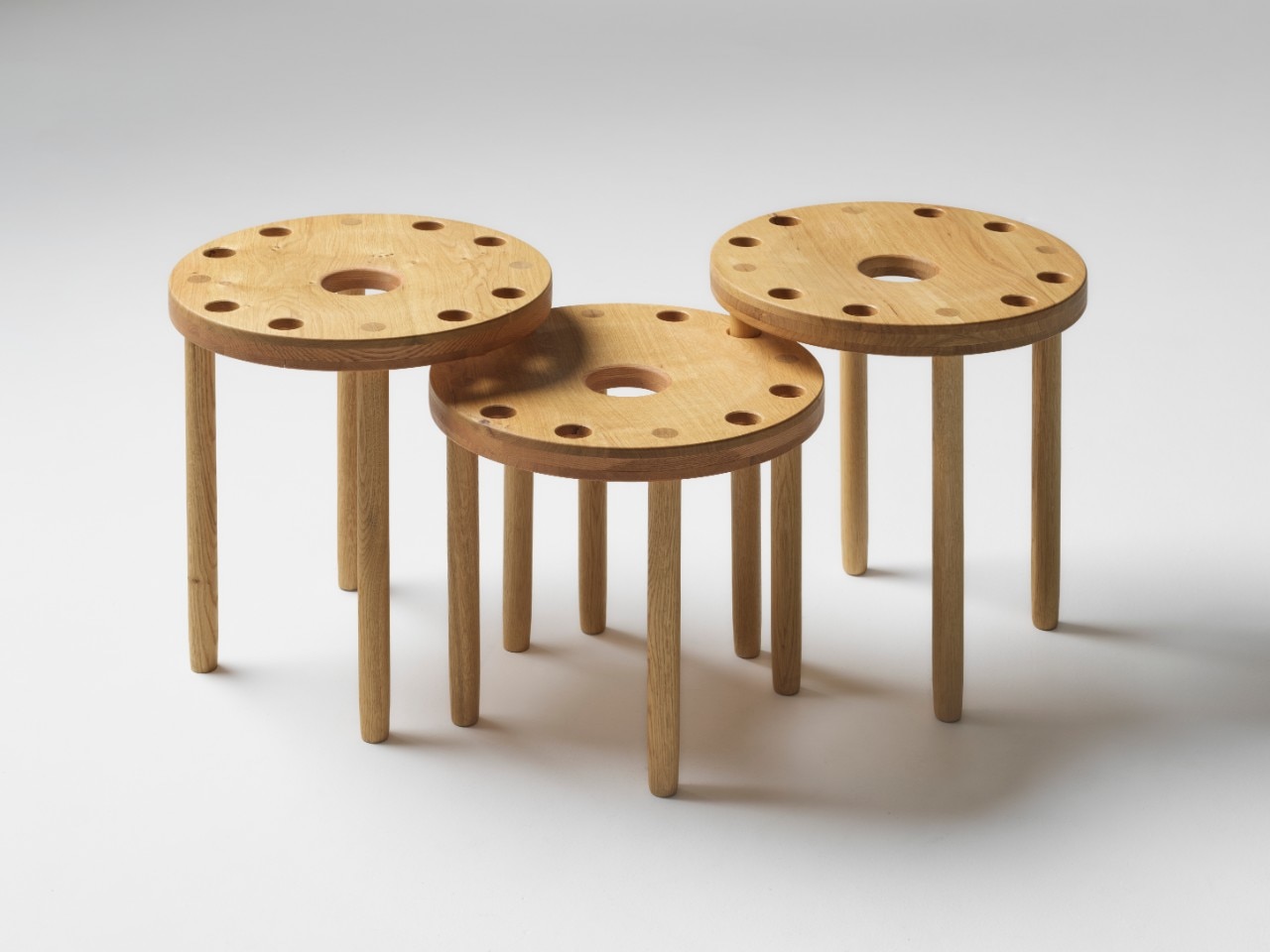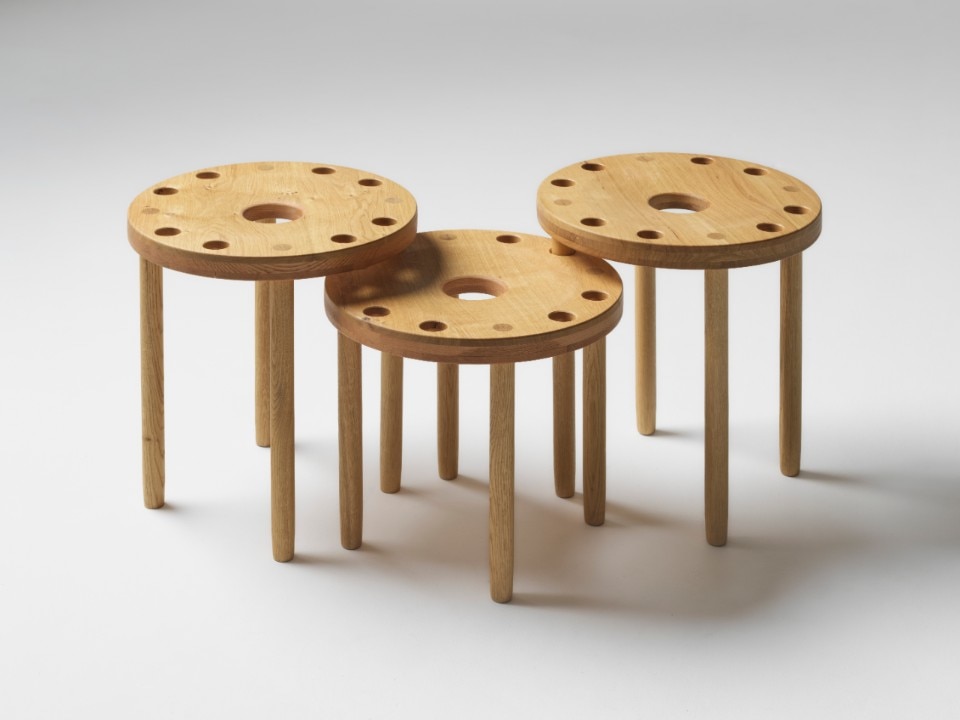This article was originally published on Domus 1066, March 2022.
“Make a prototype,” wrote Edoardo Gellner (1909-2004) in script in 1958 at the margin of a sketch for a stool intended to furnish Agip village dormitories for the children of employees
During that time, Gellner, an architect born in Austria, was asked to design the entire resort village for ENI. Specialised in mountain architecture, he chose Borca di Cadore, near Cortina d’Ampezzo, and created a project of social urban planning skilfully integrated with the landscape, designing the buildings and interiors, with great attention to detail and materials.
For the Agip village, Gellner designed the wooden furniture, which helped to make the place inviting and customisable. He imagined a series of three-legged stools, with many functions – for sitting, as end tables or for playing – and easy to handle thanks to a series of perforations on the surface. The archive sketch displays the architect’s ideas on joints and the stability of the object when stacked. Gellner also considered a playful purpose: the stools should encourage kids to find solutions, as the interlocked legs could become hollow cylinders that can then be rolled.

Made in mahogany or ash wood, they were industrialised by Fantoni until 1963, and then removed from the catalogue. His fruitful relationship with Michele Merlo, who today continues Gellner’s studio, with Luciano Marson and Karin Friebel, founders of Pieces of Venice, wanted to reclaim this design, yet use recycled wood from Venetian briccole (dolphins) – the wooden poles driven into the canal bed as markers for boats/ gondolas – made in resistant durmast oak and suited for outside use. The result reconciles the desire to spread Gellner’s work with the circular economy of Pieces of Venice (winner of the Compasso d’Oro 2020), which stands out for the constant research of sustainable designs that tell the history of Venice.
In order to craft lagoon durmast, a trip to the mountains was needed: the initial prototypes were entrusted to an artisan from Cortina, who tested production feasibility. Thus Campo San Barnaba was born, the collection in briccola wood made up of a set of three stools with varying heights and an end table with removable top (also inspired by Gellner).
The name pays homage to the section of Venice where the architect lived: in fact, he was in love with the city and passionate about sailboats. His room faced the church crowned with its perforated rose window, perhaps an unintentional source of inspiration.







